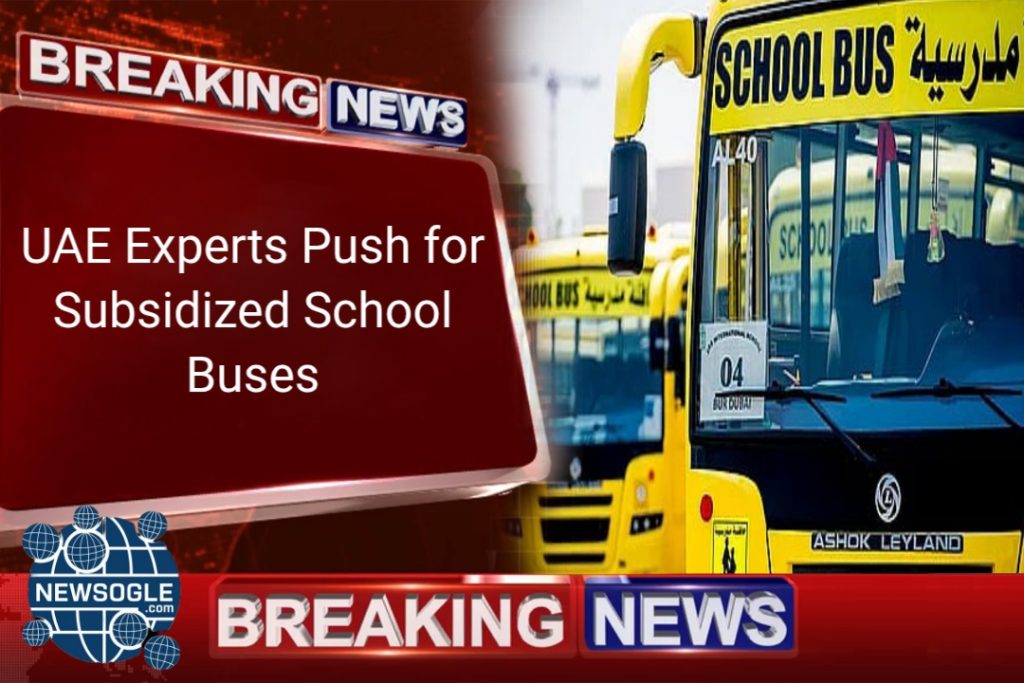
DUBAI, UAE – As urban centers across the UAE continue to grow, so does the issue of traffic congestion, particularly during school drop-off and pick-up times. A growing consensus among transportation experts, urban planners, and environmental advocates suggests a clear solution: a widespread adoption of school bus services. While the use of school buses is on the rise, experts are now calling on the government and private sector to introduce subsidized school bus programs to make them more affordable for parents. This strategic move is seen as a win-win, promising to ease traffic, reduce carbon emissions, and make daily commutes safer and more efficient for thousands of students and families.
The Current Landscape: A Rising Trend in School Bus Use
For many years, a significant number of families in the UAE have relied on private vehicles to transport their children to and from school. The reasons are varied, ranging from a preference for personal control and flexibility to concerns about the cost and reliability of bus services. However, in recent years, there has been a noticeable shift. More parents are opting for school buses, driven by a growing awareness of the environmental impact of their daily commutes, the rising cost of fuel, and the stress of navigating peak-hour traffic.
School transportation companies have responded to this demand by upgrading their fleets with modern, well-maintained buses equipped with safety features like GPS tracking and CCTV cameras. Many schools now actively encourage their students to use bus services, citing safety and convenience. This trend is a positive step, but experts argue that it’s not happening fast enough to make a significant dent in the country’s traffic problem or to help the UAE meet its ambitious climate goals. The cost remains a major barrier for many families, especially those with multiple children.
The Case for Subsidies: Addressing the Cost Barrier
The primary argument for a subsidized school bus program is to make the service more accessible and affordable for a broader segment of the population. Currently, school bus fees can range from a few hundred to over a thousand dirhams per month, depending on the distance and the school. For many middle- and low-income families, this is a significant financial burden that often forces them to choose private transport, which they may perceive as a more cost-effective option in the long run.
By providing subsidies, the government or a public-private partnership could significantly reduce the cost to parents. This would incentivize a much larger number of families to switch from private cars to school buses. The subsidy could be structured in various ways: a direct payment to schools or transport companies, a voucher system for parents, or a tax rebate for families who use school buses. Whatever the model, the goal is the same: to make the choice of a school bus a financially sound one for all.
The Ripple Effect: Easing Traffic and Cutting Emissions
The benefits of a widespread shift to school bus usage extend far beyond individual family budgets. The most immediate and noticeable impact would be a significant reduction in traffic congestion. A single school bus can take dozens of cars off the road, particularly during the busiest times of the day. This would lead to smoother traffic flow, reduced travel times for everyone, and a decrease in the frustration associated with daily commutes.
Beyond traffic, the environmental benefits are substantial. Private vehicles are a major source of carbon emissions and other pollutants. By replacing thousands of individual car trips with a single bus trip, the UAE could make a significant dent in its overall carbon footprint. This aligns perfectly with the country’s commitment to achieving net-zero emissions and its ongoing investments in a green economy. A subsidized bus program would be a practical and impactful step towards a more sustainable urban future.
Furthermore, a well-run school bus system can also improve road safety. School buses are designed to be safer than private vehicles, with features like flashing lights and stop signs that alert other drivers. By reducing the number of cars on the road, the risk of accidents, particularly around school zones, would also be reduced.
Global Precedents and Lessons Learned
The idea of a subsidized school bus program is not new. Many countries around the world have successfully implemented such initiatives to address traffic congestion and environmental concerns. In some European countries, school transport is either free or heavily subsidized for all students, regardless of income. In parts of the United States, school buses are a staple of the educational system and are largely funded by the public school system.
The UAE can learn valuable lessons from these global precedents. The key to success lies in a robust public-private partnership, a clear and transparent funding mechanism, and a strong regulatory framework to ensure the safety and reliability of the bus services. The government can work with schools and transportation companies to create a system that is efficient, affordable, and safe for all.
A Call to Action: The Role of Stakeholders
The call for subsidized school buses is a collaborative effort that requires the buy-in of multiple stakeholders.
- Government: The government can lead the initiative by providing the necessary funding and creating a policy framework that encourages the use of school buses. This could be part of a larger national strategy to promote sustainable transportation.
- Schools: Schools can play a crucial role by actively promoting their bus services and working with parents to address any concerns they may have. They can also work with transportation companies to ensure the services are reliable and safe.
- Parents: Ultimately, the success of the program depends on the willingness of parents to make the switch. They need to be educated about the benefits of school bus use, not just for their own convenience but also for the community and the environment.
In conclusion, the push for subsidized school buses in the UAE is a forward-thinking and strategic move that has the potential to transform urban mobility. It addresses the triple challenge of traffic congestion, environmental sustainability, and affordability for families. While the road ahead may have its challenges, the widespread support from experts and the clear benefits of such a program make a compelling case for its implementation. It is a step towards a greener, safer, and more efficient future for the UAE.






